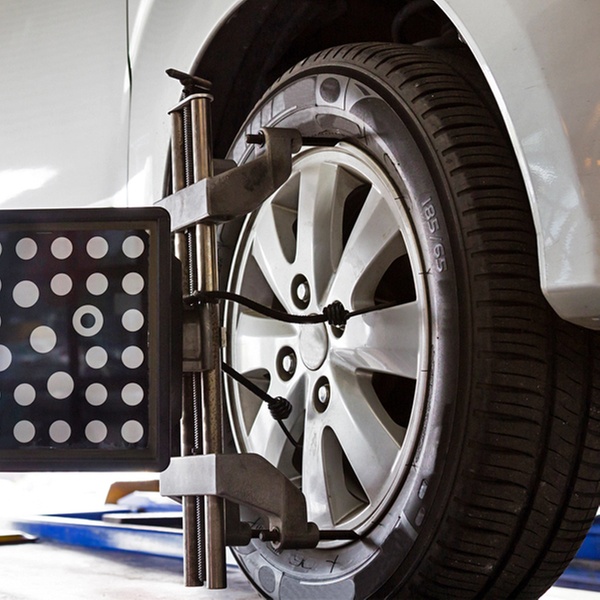As it so happens, Big O Tires is a place where many people take their cars for an alignment service. So how much is an alignment at Big O Tires?
What's In This Guide?
If you want to do your alignment services at Big O Tires, you ought to pay between $80 and $120 depending on if you need a front alignment or an alignment at all four corners. You also need to keep in mind that there are some price differences between Big O Tire facilities as prices vary due to location.
One of the most well-known symptoms of misaligned wheels is when your car pulls to one side or the other. This happens because your wheels aren’t angled properly which means that your steering inputs will never fully translate to the direction you want to go.
This will lower your on-road safety as it affects how confidently and precisely you can place your car through narrow corners, especially at higher speeds. This is even more exaggerated when driving through rain and snow and it could even make it really difficult to keep your car going in a straight line.
Does Wheel Alignment Increase Comfort?If your wheels are misaligned, you are not using the entire contact patch of the tire to do all the softening when it comes to road undulations. Severely misaligned wheels can even put additional weight onto your tire sidewalls which will inevitably lead to vibrations and a really loud tire roar.
Your car feels jerky and unsettled which means that you will have to work more than usual to reach a satisfactory level of comfort. All of which can be negated by simply taking your car for a wheel alignment.
In today’s day and age of electric cars, terms such as drag and aerodynamics have become bragging points for many automakers, but these terms apply to all cars on the road, not just EVs. For example, if your wheels are misaligned, they will create more drag which will inherently reduce how effectively your car cuts through the air and cause your engine to work harder to reach an adequate speed.
This leads to more fuel being burnt which leads to bad fuel economy. A proper wheel alignment will make your car go as straight as possible which will lower your drag and thus increase your fuel economy.
Does Wheel Alignment Increase Handling and Stability?One of the most noticeable issues with wheel misalignment is not being able to explore the very limits of traction and handling that your car can offer. This means that you will not be able to push your car the way you are used to as your car is not going to be as precise and as well controlled as usual.
This will not only make your car handle worse, but it will also increase your chances of ending up in an accident by quite some margin. Having a car that isn’t able to go straight when needed means that you will constantly have to do all sorts of steering corrections.
Does Wheel Alignment Increase Tire Lifespan?There are many different ways how one can increase the lifespan of tires as doing a wheel alignment is just the tip of the iceberg. The biggest reason why misaligned tires die sooner is that they don’t wear in an even fashion. This means that one part of the tire is going to take increased abuse while other parts will not wear as quickly.
If you don’t align your tires, they are going to last significantly shorter. This is especially a problem if you don’t balance and rotate your tires as well as this can eat through your tires at an alarming rate which will lead to increased costs which excites absolutely no one besides the tax man.
Location | Service Type | Average Alignment Cost |
Costco | Front-End | $80 |
Four-Wheel | $200 | |
Walmart | Front-End | $50 |
Four-Wheel | $75 | |
Firestone | Check-Up | Free |
Standard | $70 | |
Lifetime | $160 | |
Sears | Standard | $75 |
One-Year Plan | $95 | |
Lifetime | $190 | |
Goodyear | Check-Up | Free |
Front-End | $60 | |
Midas |
Front-End | $70 |
Four-Wheel | $90 | |
Pep Boys | Front-End | $80 |
Four-Wheel | $90 | |
Valvoline | Front-End | $80 |
Jiffy Lube | Standard | $70 |
Big O Tires | Standard | $80 |
Mr. | Standard | $50 |
Les Schwab | Check-Up | Free |
Thrust Angle | $100 | |
Four-Wheel | $125 |

The purpose of doing a wheel alignment is to adjust your camber, toe, and caster. Camber refers to the angle of the tire, or if it is facing inwards or outwards. A positive camber happens when the tops of tires are angled towards the outside while negative camber happens when the top of your tires are facing inwards. The idea here is to achieve a neutral camber when the top and the bottom of your wheels are perpendicular to the ground.
Toe adjusts the position in which your wheels are facing while your steering wheel is perfectly straight. As such, your toe is essentially an angle of the tires in regards to the longitudinal axis.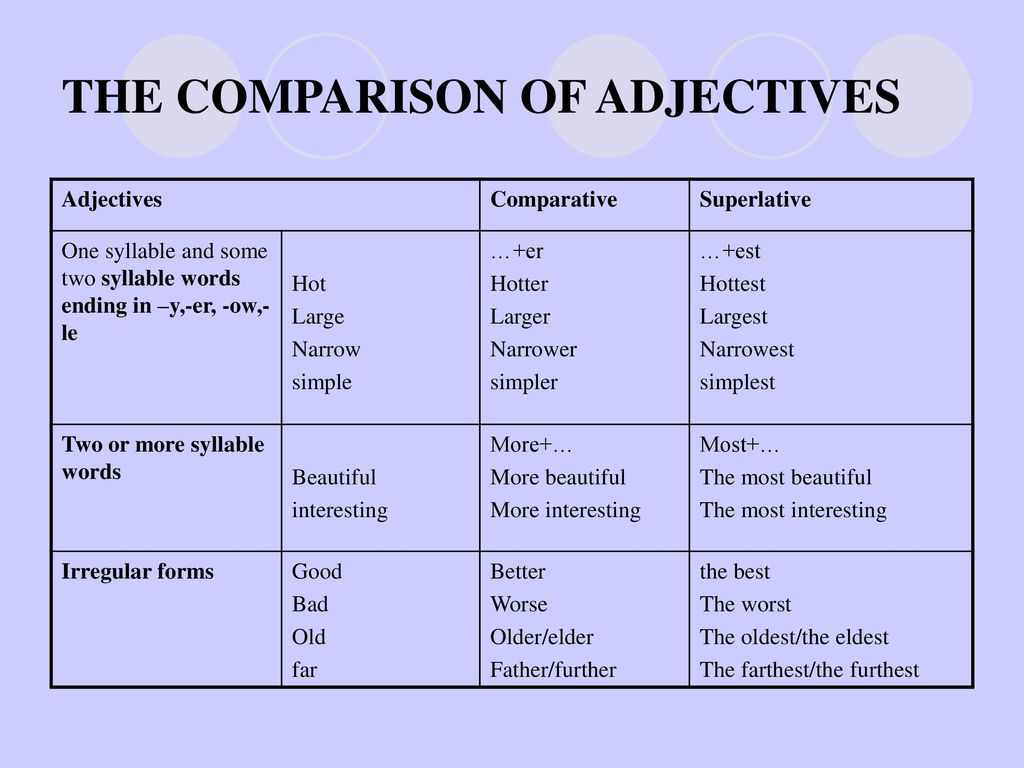 If your wheels are pointing outwards when your steering wheel is straight, it means you are experiencing toe-out. Toe-in is when your tires are pointing toward each other while the wheel is straight.
If your wheels are pointing outwards when your steering wheel is straight, it means you are experiencing toe-out. Toe-in is when your tires are pointing toward each other while the wheel is straight.
The caster determines where the steering axis is in relation to the suspension system. If your caster is positive, it means that your suspension is tilting toward the rear of the car. If your caster is negative, it means that your suspension is pointing toward the front of the car.
All three of these need to be precisely where the manufacturer intended them to be in order to reach optimal wheel alignment. Sometimes you will have to adjust all three of these measurements while at other times you will just have to adjust your toe and camber.
Contrary to popular belief, you don’t have to perform wheel alignment after a set amount of miles because a wheel alignment is necessary only if your wheels are misaligned. Thankfully, most places (including Big O Tires) offer a free inspection that will determine if you need a wheel alignment or not.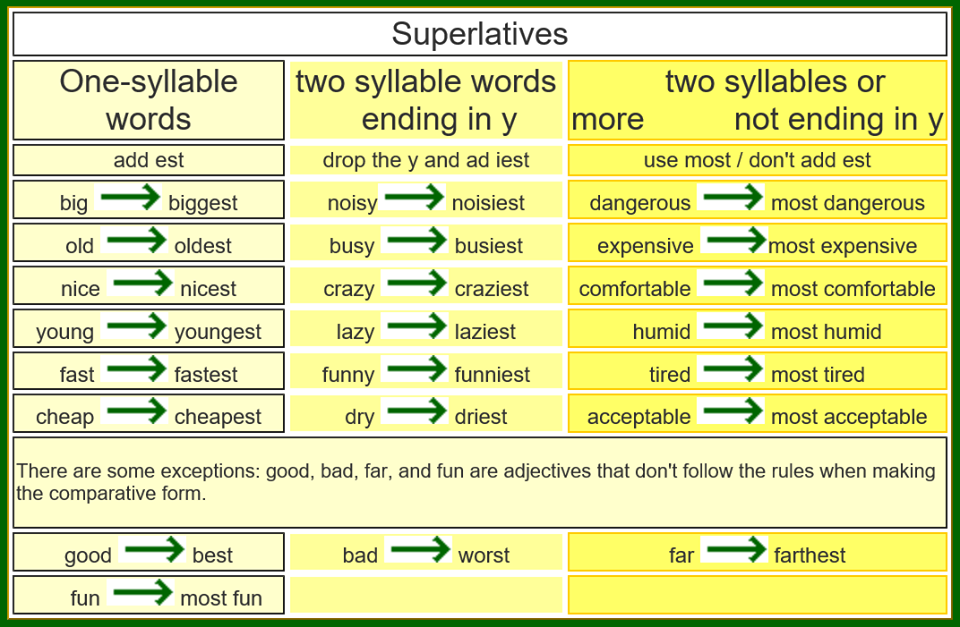
Most of these inspections tend to take a couple of minutes which is nothing compared to the headaches misaligned wheels can cause. The reality is that misaligned wheels tend to occur when your drivetrain, your suspension, or your wheels withstand a sudden impact that sends some of these components in the wrong direction.
Some people believe that wheel alignment is necessary after changing your tires, but it shouldn’t be that way. Be that as it may, be sure to do a wheel alignment inspection 10,000 miles or so, or whenever you notice any symptoms of misaligned wheels.
The costs of doing a wheel alignment at Big O Tires vary depending on the type of alignment needed and the location. Some locations in some states will charge you more than others and front-wheel alignment tends to be cheaper compared to four-wheel or thrust alignment. All in all, you can expect to pay between $80 and $120 for a wheel alignment at Big O Tires.
The good thing about Big O Tires is that they often offer various discounts and package deals that can lower this price even further. As such, be sure to be on the lookout for these as it’s always a good idea to know where to look if for some reason you do need wheel alignment or any other maintenance and car repair services.
As such, be sure to be on the lookout for these as it’s always a good idea to know where to look if for some reason you do need wheel alignment or any other maintenance and car repair services.
If there’s one thing more important than giving cars propulsion, it’s being able to control it. Sure, an engine and gearbox let you go places, but without properly working suspension, steering, brakes, or wheels, you’re in a world of hurt. Countless accidents occur every year around the world because the car being driven isn’t able to track right. Hence, the importance of learning about an alignment cost.
Wheel-slash-tire alignments are something that we hear about quite often. Usually, when we’re sending our cars over for their regular service and oil change, your technician buddy might make mentions of an alignment service. Typically, it’s understood by everyone to be best practice to simply keep our heads down, and get that alignment done, as prescribed by a mechanic. But what does it really mean?
But what does it really mean?
Simply put, the wheels need to be aligned with the rest of the car, most especially the suspension and steering. This adjustment of its alignment settings ensures that your car not only drives and performs optimally but also does it efficiently and comfortably. Not to mention, making sure your car could steer and brake reliably, without leaving you out of control. But how much does an alignment cost?
Before we look into how much an alignment cost is, let’s take a deep dive into what alignments are in general. As we highlighted earlier, alignment jobs will be centered around your wheels. In particular, it entails realigning and readjusting the angle that your wheels and tires sit in relation to the rest of the car.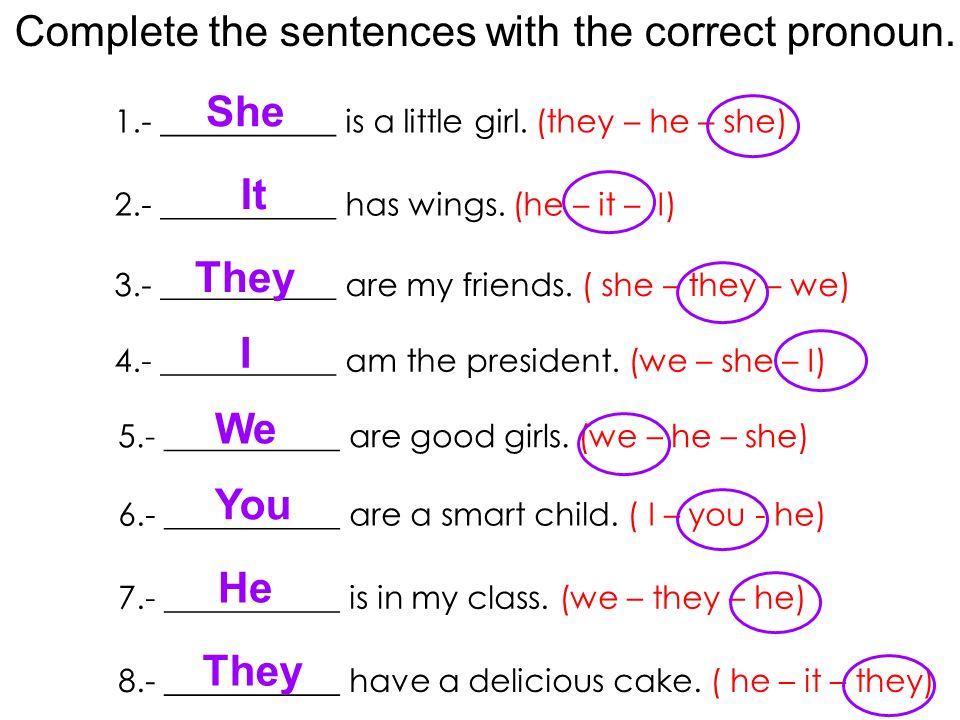 In other words, make sure the angle that the wheels/tires are driving at is properly calibrated.
In other words, make sure the angle that the wheels/tires are driving at is properly calibrated.
By making sure your wheels are aligned correctly, your car will handle, steer, and brake optimally. It’s a side effect of the wheels rolling with minimal resistance, being pointed in the right direction (just 1 or 2-degrees of offset could make a huge difference), and that the tires are getting as much traction as they possibly need. This won’t just guarantee better performance, but your safety behind the wheel.
A misaligned set of wheels and tires will induce poor handling and drivability. You might notice more vibrations and roughness as the car turns and drives along. On top of that, the probability of your car pulling and veering to one side or the other is particularly dangerous. If safe driving isn’t sufficient to convince you, note that getting an alignment would also save you a tonne of cash down the line.
Poorly aligned tires-slash-wheels mean that your car wouldn’t roll and move without at least some resistance being put against it.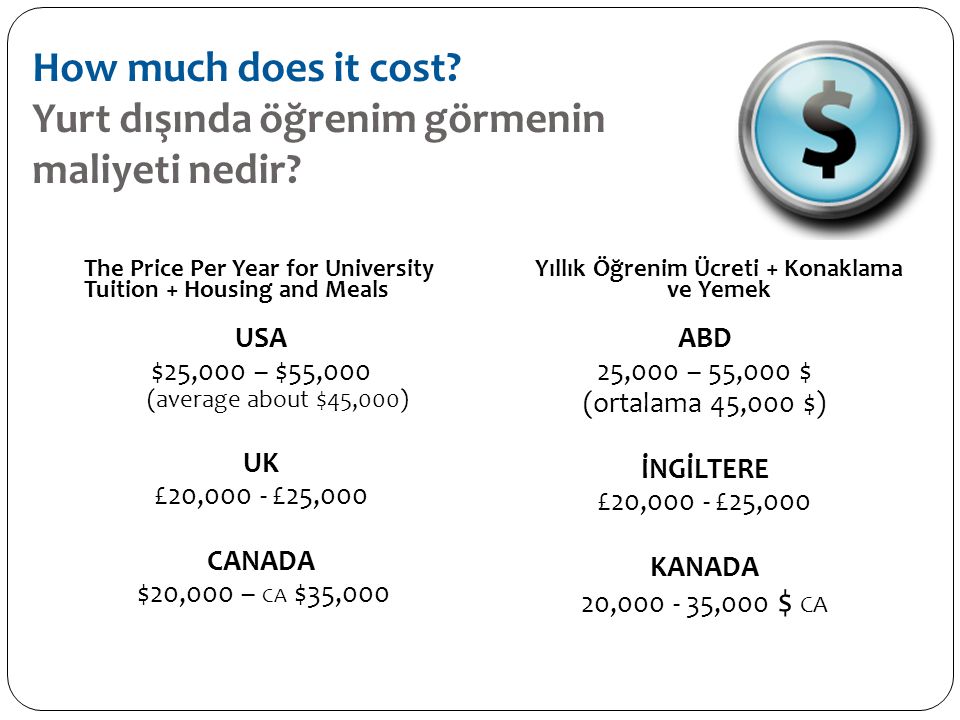 Firstly, you’re forced to use more of the engine to keep it going, which will incur higher fuel consumption. Furthermore, misaligned tracking of the wheels will put far higher levels of strain on the rest of the suspension, steering, and tires. This wears them out prematurely.
Firstly, you’re forced to use more of the engine to keep it going, which will incur higher fuel consumption. Furthermore, misaligned tracking of the wheels will put far higher levels of strain on the rest of the suspension, steering, and tires. This wears them out prematurely.
Here’s a quick TL;DR list of what you’re gaining from getting the wheels aligned:
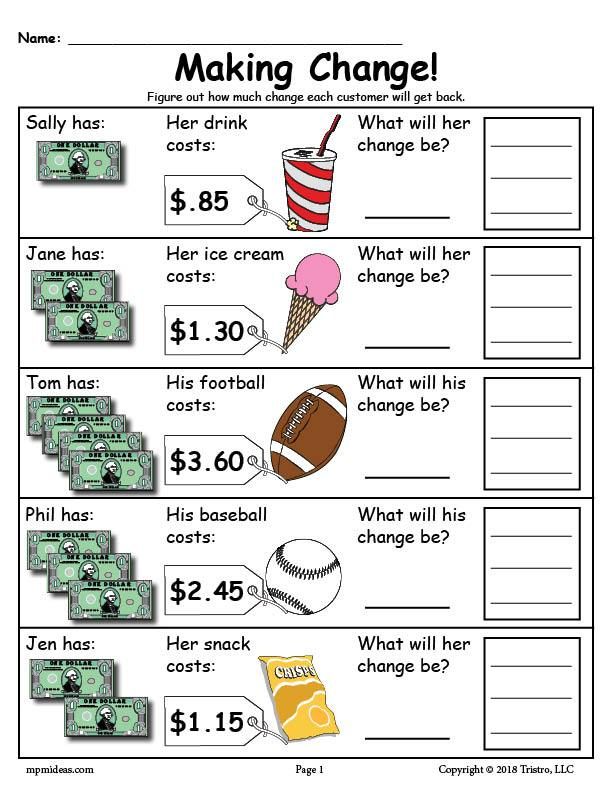
On the flip side, here’s a list of downsides:

When you drive your car to a shop, here’s what they do to get it aligned to the right specifications or angles:
 This is to ensure that nothing’s worn out or broken, which may have to be repaired.
This is to ensure that nothing’s worn out or broken, which may have to be repaired.If you’re noticing that your car isn’t braking, steering, riding, or handling right, take it to some nearby workshop promptly. Get it checked out, as misaligned wheels/tires, if not resolved quickly, can prove to be silent killers. Oftentimes, misalignments occur naturally, as the wheels and tires gradually lose tracking and alignment as you put more miles on them. On other days, it may be circumstantial.
Oftentimes, misalignments occur naturally, as the wheels and tires gradually lose tracking and alignment as you put more miles on them. On other days, it may be circumstantial.
For example, accidentally curbing your wheels as you were trying to park your car. Or, hitting a piece of debris or speedhump at high speeds. Regardless, such impacts could be sharp enough to throw the wheels out of alignment. But what exactly is being misaligned, you might ask? In alignment terms, it comes down to three particular parameters when it comes to the angling of your wheels and tires:
 Toe-in means that the front of the wheels is pointing towards each other. On the other hand, toe-out means that the front of the wheels is pointing away from each other.
Toe-in means that the front of the wheels is pointing towards each other. On the other hand, toe-out means that the front of the wheels is pointing away from each other.It’s recommended to pay up for a wheel alignment cost every 10,000 miles. Or, just to be safe, every occasion you get to send your car in for its oil change and regular servicing. However, a 10,000-mile rule shouldn’t be a given in all scenarios. Depending on how and where you drive your car, it might be necessary to get an alignment done as frequently as every 5,000 miles. Or, maybe even less.
Remember that wheels, while they naturally get misaligned anyway, will lose the right tracking even faster if you’re putting more strain on it.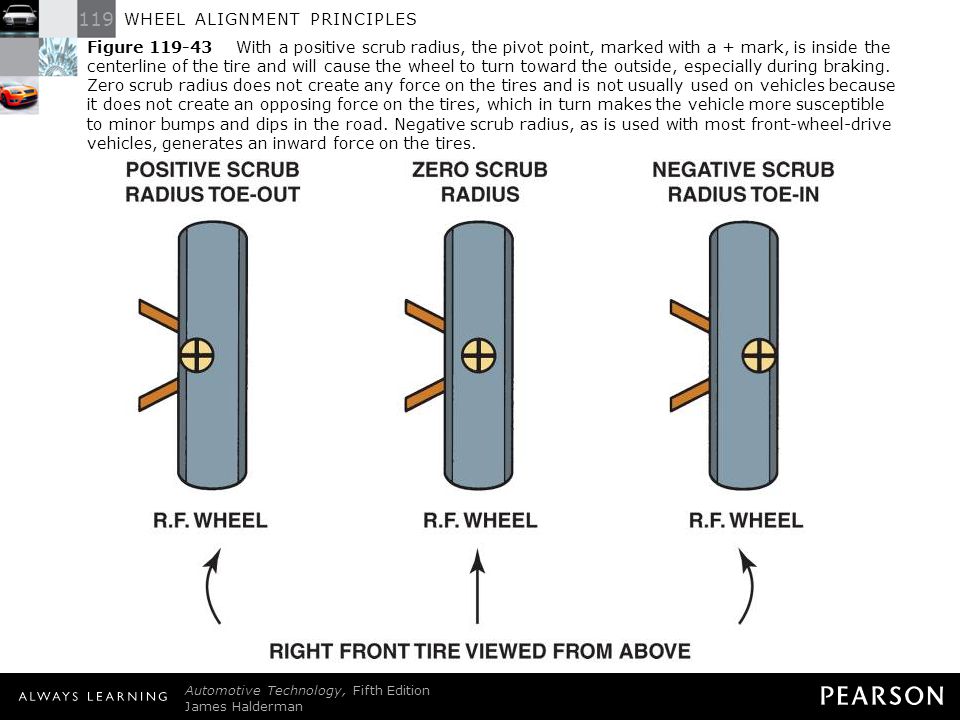 For instance, regularly driving your car on rough and uneven roads, with plenty of potholes or speedbumps. Additionally, driving in a spirited manner, such as taking a corner too quickly or going too fast while turning. In doing so, you’ll lose alignment quicker.
For instance, regularly driving your car on rough and uneven roads, with plenty of potholes or speedbumps. Additionally, driving in a spirited manner, such as taking a corner too quickly or going too fast while turning. In doing so, you’ll lose alignment quicker.
In short, we’d still recommend checking the owner’s manual to see how often the car manufacturer suggests an alignment to be done. Otherwise, be wary of these warning signs of misaligned wheels, and have your car inspected as soon as they appear:
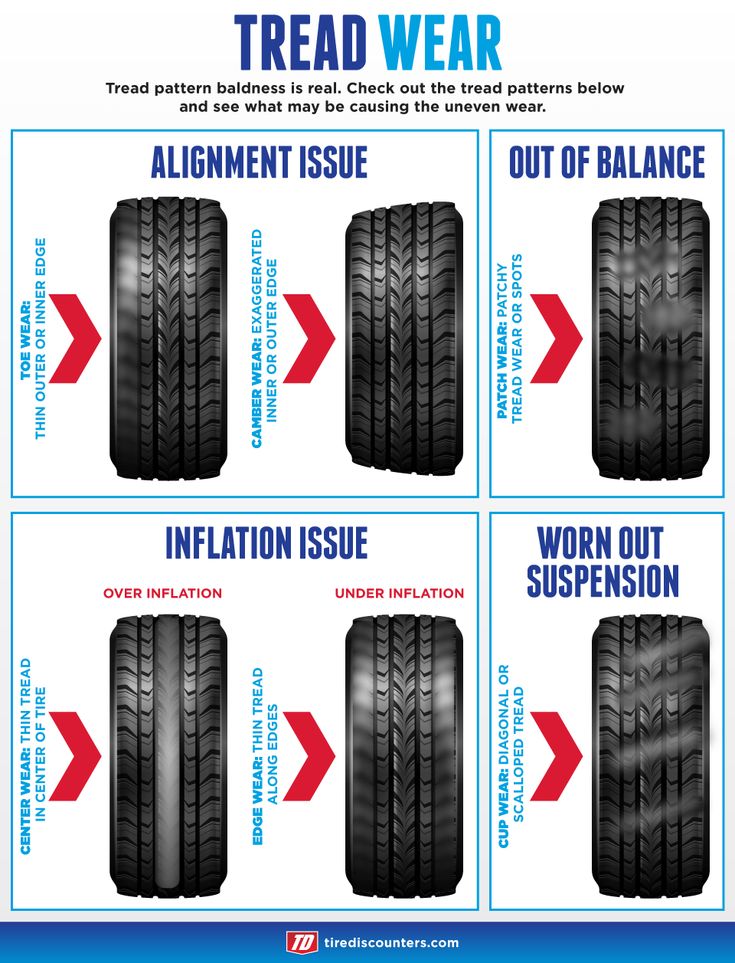
There’s more than just one type of wheel alignment that you could opt for. On most occasions, your mechanic friend will be the one to make suggestions on which one you should get. This judgment is based on the type of vehicle you have, and how you’re driving it. Also, just how badly misaligned the wheels are. In general, there are three types of wheel alignment cost that you’ll have to consider:
 It’s the most comprehensive option, by aligning the front and rear axles altogether. This is suggested if you have an all- or four-wheel-drive vehicle. Or, a front-wheel-drive car with adjustable rear suspension. Not to mention, vehicles with independent suspensions.
It’s the most comprehensive option, by aligning the front and rear axles altogether. This is suggested if you have an all- or four-wheel-drive vehicle. Or, a front-wheel-drive car with adjustable rear suspension. Not to mention, vehicles with independent suspensions.Finally, we can get down to the nitty-gritty of a wheel alignment cost. So, how much does it cost? On average, a wheel alignment will set you back between $100 to $250. Nevertheless, there are cases in which you could get an entire alignment done for as little as $40 or less. Ultimately, it’ll vary quite a bit depending on several key factors, determining the final tally for an alignment cost:
Ultimately, it’ll vary quite a bit depending on several key factors, determining the final tally for an alignment cost:
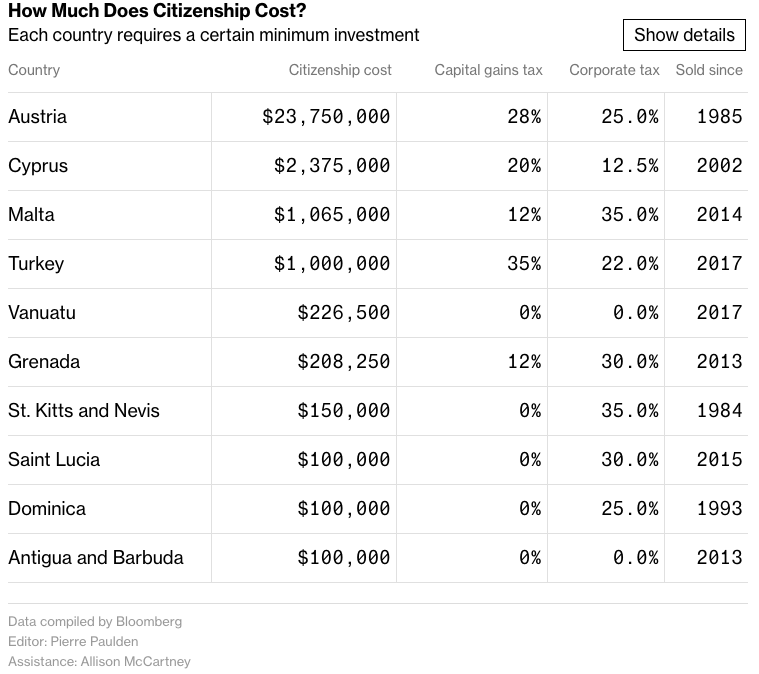 Certain shops also run free-of-charge alignment checks. It’ll cost you to get the alignment done, but nothing for just a check-up.
Certain shops also run free-of-charge alignment checks. It’ll cost you to get the alignment done, but nothing for just a check-up.As a rough average (as of 2022), an alignment cost is priced at around $25 to $50 per wheel. For a front-end (two-wheel) alignment, that rounds up to about $50 to $100. If you’re opting for a four-wheel alignment, it comes to $100 to $200.
Given that you’ll be doing a wheel alignment, on average, roughly once per year or every two years, the typical alignment cost isn’t an overbearing expense. That’s especially once you consider how big of an impact it’ll make on your car drives. We’d still highly suggest opting for the costlier four-wheel alignment. While it may cost a bit more, it’ll ensure a more thorough alignment process is done.
To get the best deals possible, it’s wise to compare an alignment cost between your immediate and available options. Would it be best to get it done at the local workshop, authorized dealership, or a big-box chain? Well, if your car’s alignment is pretty out of whack, it’s best to head over to a dealer or specialty tire shop.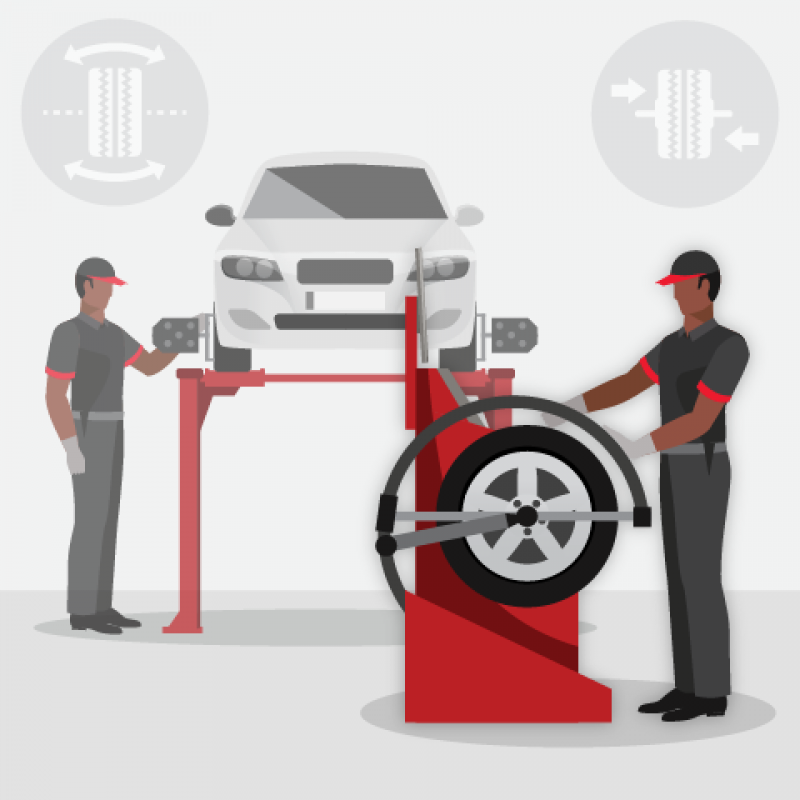 They have the best machinery and mechanics that specialize in alignments.
They have the best machinery and mechanics that specialize in alignments.
For most ordinary circumstances though, you can get better prices at these big retail chains or large workshop franchises. We’re talking about the likes of NTB, Walmart, Discount Tire, Big O Tires, Les Schwab, and more. On certain days, they might offer huge discounts on wheel alignments and other service work for your car. Or, they may throw in an alignment for free if you buy tires from them.
While you’re making a comparison, be sure to look at what other perks do they offer. Do they provide a warranty after each alignment? Or, how about extended warranty programs that offer you the choice of getting several alignments done in that period? How about any refunds if the alignment is done poorly? Take all this into account, on top of the price they charge you for that base alignment.
To give you a better idea of how much these big-name chains charge you for a tire alignment cost, here’s a detailed comparison between each one:
| Location | Service Type | Average Alignment Cost |
|---|---|---|
| Walmart | Front-End | $50 |
| Four-Wheel | $75 | |
| Costco | Front-End | $80 |
| Four-Wheel | $200 | |
| Firestone | Check-Up | Free |
| Standard | $70 | |
| Lifetime | $160 | |
| Sears | Standard | $75 |
| One-Year Plan | $95 | |
| Lifetime | $190 | |
| Goodyear | Check-Up | Free |
| Front-End | $60 | |
| Pep Boys | Front-End | $80 |
| Four-Wheel | $90 | |
| Midas | Front-End | $70 |
| Four-Wheel | $90 | |
| Big O Tires | Front-End | $80 |
| NTB | Standard | $90 |
| One-Year Plan | $125 | |
| Three-Year Plan | $180 | |
| Standard (Truck) | $100 | |
| One-Year Plan (Truck) | $140 | |
| Three-Year Plan (Truck) | $230 | |
Mr.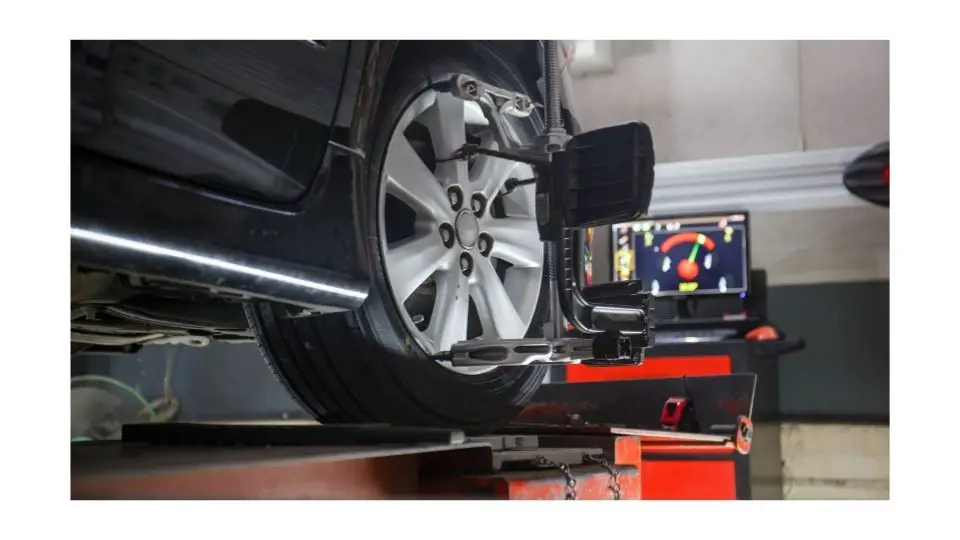 Tire Tire | Standard | $50 |
| Valvoline | Standard | $80 |
| Jiffy Lube | Standard | $70 |
| Les Schwab | Check-Up | Free |
| Thrust Angle | $100 | |
| Four-Wheel | $125 |
Beyond the difference in cost between one workshop chain and another, the actual size of your tires might also play a role in alignment cost. In short, bigger tires, the more it may cost to align them:
| Tire Size | Alignment Cost |
|---|---|
| Up To 18 Inches | $60 |
| 19 Inches | $70 |
| 20 Inches | $70 |
| 20-21 Inches | $80 |
| 24-26 Inches | $100 |
| 28 Inches And Above | $120 |
That then just about rounds it up in our guide on wheel alignment cost. In all, we can see that when comparing it to most other car-related repairs or services, an alignment cost is relatively painless. It’ll be somewhat light on your wallet, with an average of $100 at most locations. And, it brings ample positive side effects to how your car will inevitably drive after getting a wheel alignment done.
In all, we can see that when comparing it to most other car-related repairs or services, an alignment cost is relatively painless. It’ll be somewhat light on your wallet, with an average of $100 at most locations. And, it brings ample positive side effects to how your car will inevitably drive after getting a wheel alignment done.
A wheel alignment is one of those tasks that are vital to be performed on any car, especially if you’re driving it regularly. Ignoring it could badly impact its performance and driveability. If you leave it be for too long, it might cause you to lose control entirely. Therefore, a quick alignment job once every 10,000 or so miles (or roughly once a year or two) is a safe bet to keep yourself safe on the road.
Here are some of the most popular FAQs on the subject of wheel alignment cost:
Costco offers a variety of car-related services, including those concerning tires. Their tire centers offer everything from buying new tires to installation, rotation, balancing, as well as alignments. Costco’s wheel alignment cost is about $80 to $200, depending on whether you want a front-end or a four-wheel alignment.
Their tire centers offer everything from buying new tires to installation, rotation, balancing, as well as alignments. Costco’s wheel alignment cost is about $80 to $200, depending on whether you want a front-end or a four-wheel alignment.
Walmart is among the cheapest places where you can get car services done. This includes alignments for your wheels, where Walmart significantly undercuts its competition. You’re looking at a cost of as low as $50 for a front-wheel alignment. Or, around $75 for a four-wheel alignment. If you could get a coupon, it’ll be even cheaper.
Despite being one of the largest tire chains in the country, Discount Tires does not offer an alignment service. They at least offer other tire-related services, such as tire check-ups and inspections, new tire changes, rotation, and balancing.
There’s a price to pay to opt for a more professional wheel alignment job.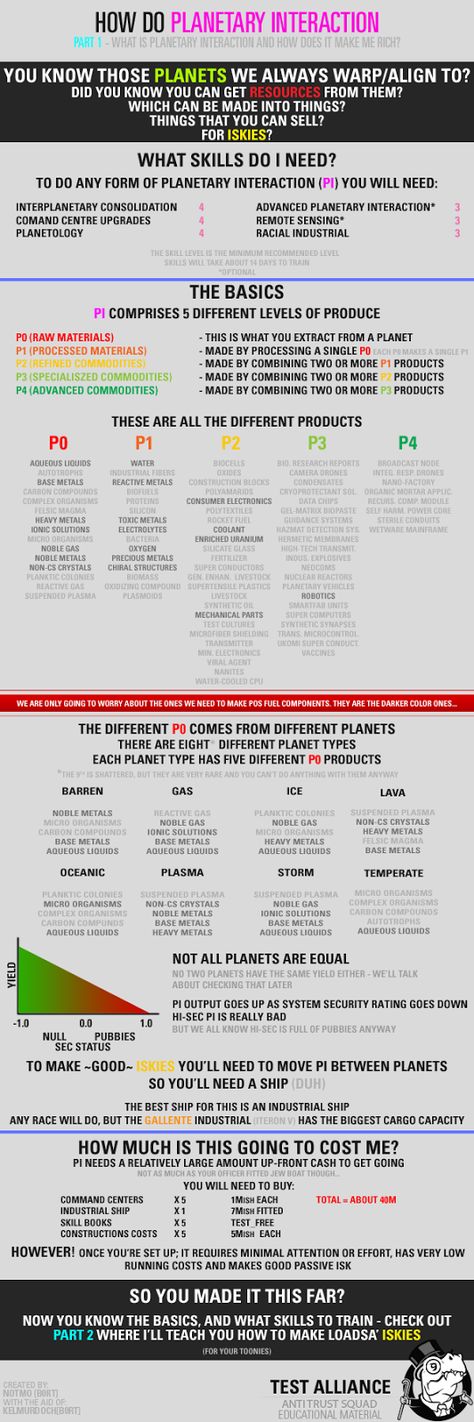 Compared to big-box retail chains that offer practically anything, Big O Tires will charge a premium for an alignment cost. You’re looking at a cost of $80 and higher. But, their expertise when it comes to all-things tires may be best suited for serious or complex alignments.
Compared to big-box retail chains that offer practically anything, Big O Tires will charge a premium for an alignment cost. You’re looking at a cost of $80 and higher. But, their expertise when it comes to all-things tires may be best suited for serious or complex alignments.
Les Schwab is another all-around car repair expert, offering a wide variety of services. This includes a wheel alignment, which they offer free check-ups, as well as thrust angle and four-wheel alignments. For a thrust alignment, they’re charging you $100. In regards to four-wheel alignments, it’s going to cost you at least $125, which is still pretty decent.
Getting all four wheels aligned will naturally cost you more. On average, you’re looking at between $100 to $200 or higher for this sort of alignment to be done. However, most experts will tell you that it’s well worth the price. Owing to how complex modern cars are, and depending on how you drive them, a four-wheel alignment guarantees a more thorough job.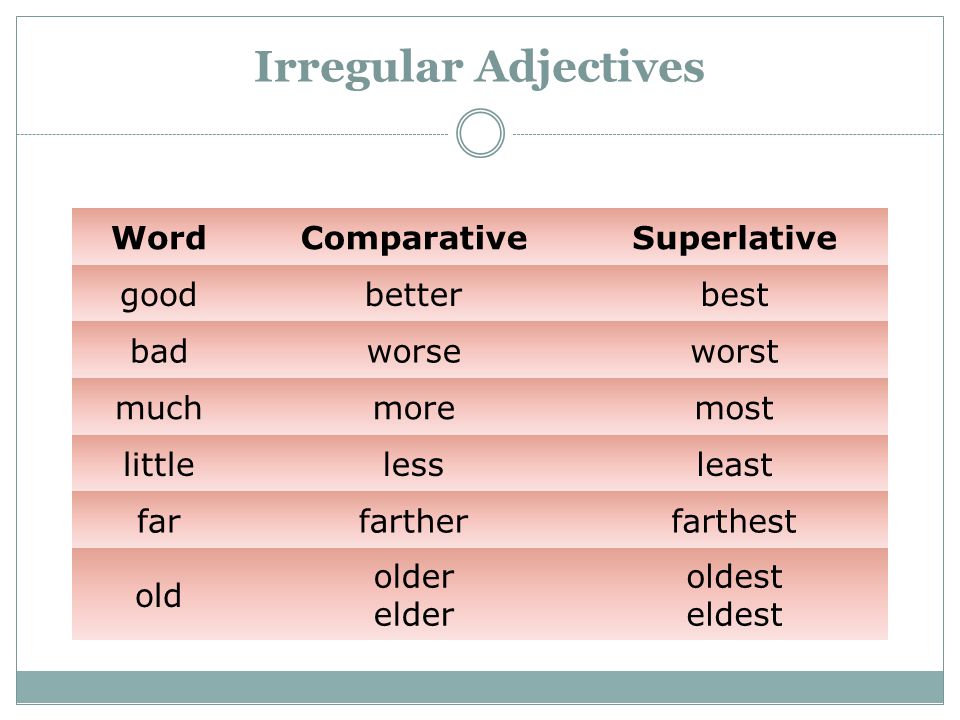
In contrast, front-end alignment costs are typically cheaper, around $50 to $100 on average. That’s since you’re only aligning two wheels instead of four. Nonetheless, if you could afford one, there’s no reason why you shouldn’t opt for a full four-wheel alignment. Some mechanics even say that front-end alignments are fast becoming insufficient for some modern cars.
Regularly, wheel alignments take little to no time to complete. You’re not replacing anything, it’s just a process of readjusting the wheels. With a skilled mechanic, and if your wheels don’t require significant realignment, it takes as little as 20 minutes. If more serious inspections and readjustments need to be done, that could take up to 1 hour to finish.
It’s definitely a great idea, if you have the time, to compare prices for an alignment cost of the shops and dealers near you.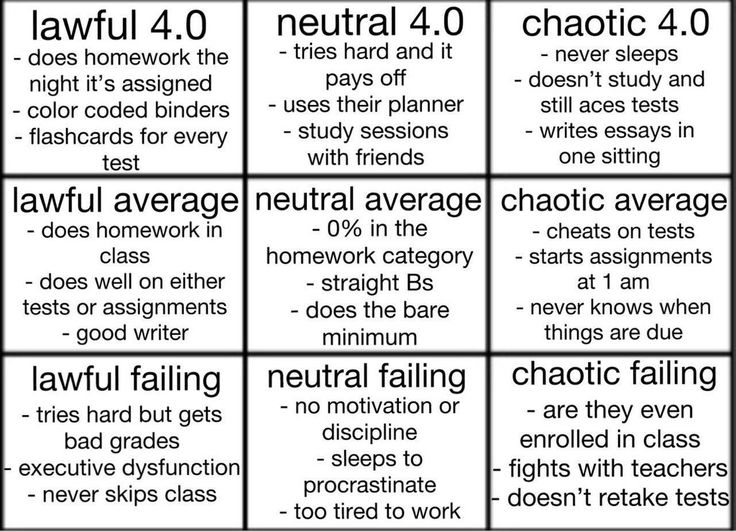 Often, the cost itself is the difference of $10 or none at all. However, different shops or chains might offer additional warranties, perks, or other services that might interest you. There are loads of sites online where you can compare pricing between workshops in your area.
Often, the cost itself is the difference of $10 or none at all. However, different shops or chains might offer additional warranties, perks, or other services that might interest you. There are loads of sites online where you can compare pricing between workshops in your area.
These tools have been tried and tested by our team, they are ideal for fixing your car at home.
report this ad
Tags: Ad/alignment/alignment shop/bad alignment/camber/care/caster/comparison/cost/Guide/maintenance/Market/Ownership Advice/Ownership Experience/repair/Service/Servicing/Steering/suspension/tires/toe/troubleshooting/wheel alignment/Wheels
At certain runs, the car suspension requires preventive measures.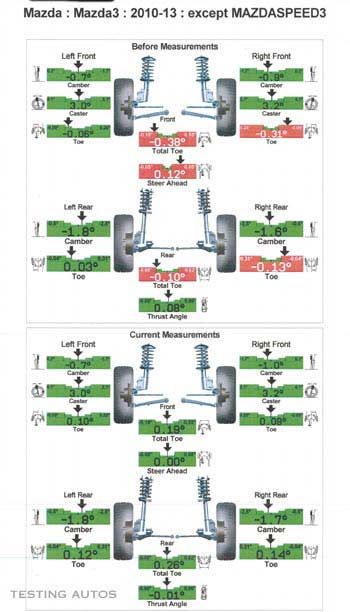 One of which is the adjustment of wheel alignment angles or, more simply, wheel alignment.
One of which is the adjustment of wheel alignment angles or, more simply, wheel alignment.
The correct setting of the camber and toe angles ensures the controllability and directional stability of the car. The process of maneuvering is facilitated and the tendency to drift is reduced. Wheel alignment on cars also affects tire wear and fuel consumption. nine0005
We recommend adhering to the following frequency of wheel alignment adjustment on cars - 1 time per year or 1 time in 15 thousand kilometers. This will maintain the standard wheel alignment and extend the life of suspension components and tires. However, there are situations when unplanned intervention is required:
The Avtoremstroy service center has a specialized 3D stand for diagnosing and adjusting the wheel alignment. This stand allows you to accurately determine the position of the wheels and adjust their position according to the manufacturer's recommendations. nine0003
This stand allows you to accurately determine the position of the wheels and adjust their position according to the manufacturer's recommendations. nine0003
| No. p / 'p | Car model | Price with VAT 20% | |
|---|---|---|---|
| Testing at the stand | Check and adjustment | ||
| 1 | VAZ, Lada, IZH, Datsun Ondo | 550 | nine0053 1100|
| 2 | UAZ, Largus, Vesta, X-Ray | 600 | 1200 |
| 3 | Gazelle NEXT | 900 | 1800 |
| four | GAZ Sable, Gazelle | nine0053 7001400 | |
| five | Moskvich 412, GAZ (Volga), Niva, Chevrolet-Niva 700 | 600 | 1200 |
| 6 | Alfa Romeo | 800 | 1600 |
| 7 nine0050 | Audi 80, B4, 100, 200 | 800 | 1600 |
| 8 | Audi A3, A4, A6, | 900 | 1800 |
| nine | A6 Quattro, TT, S8, Q3, All Road, Q5 | 950 | nineteen00 |
| 10 | Audi Q7, Audi A8, Audi A8 Quattro, S8 Quattro | 1100 | 2200 |
| eleven | bmw 3 series | 900 | 1800 |
| 12 | BMW 5 series, X3, X4 nine0050 | 900 | 1800 |
| 13 | BMW 7 series, X5, X6, M6 | 1100 | 2200 |
| fourteen | Cadillac DeVille Escalade | 1100 | 2200 |
| 15 nine0050 | Chevrolet Blazer | 950 | 1900 |
| sixteen | Chevrolet Lacetti, Epica, Spark, Aveo, Cruze Cobalt, Evanda, Lanos, Rezzo | 600 | 1200 |
| 17 | Chevrolet Lumina, Tahoe | 1100 nine0050 | 2200 |
| eighteen | Chevrolet PT Cruiser, Neon, 300M | 950 | 1900 |
| nineteen | CITROEN C2, C3, C4, Xsara, Picasso, Berlingo | 700 | 1400 |
| 20 | nine0049 CITROEN C5 Xsantia900 | 1800 | |
| 21 | CITROEN Jumper | 900 | 1800 |
| 22 | Daewoo Matiz | 600 | 1200 |
| 23 | Daewoo Nexia, Lanos, Espero, Kalos, Magnus, Nubira | 700 | 1400 |
| 24 | Daewoo, Leganza, Musso | 800 | 1600 |
| 25 | Dodge Caravan | 800 nine0050 | 1600 |
| 26 | FAW Vito | 700 | 1400 |
| 27 | Fiat Albea, Doblo, Punto, Panda, Bravo | 700 | 1400 |
| 28 | Fiat Ducato nine0050 | 1000 | 2000 |
| 29 | Ford Ka, Escort, Fiesta, Orion, Fusion | 600 | 1200 |
| thirty | Ford Focus | 700 | 1400 |
| 31 nine0050 | Ford Mondeo, Cougar, C-Max, Scorpio* | 800 | 1600 |
| 32 | Ford Taurus, Thunderbird, Probe, Transit, Galaxy | 950 | 1900 |
| 33 | Ford Explorer, Bronco, Maverick, Galaxy | nine0053 10502100 | |
| 34 | Haval H7 | 800 | 1600 |
| 35 | Haval Dargo, Haval Jolion | 900 | 1800 |
| 36 | Haval H9 | 1000 | 2000 |
| 37 | Ford Expedition | 1100 | 2200 |
| 38 | Honda Civic, Capa, Logo | 700 | 1400 |
| 39 | Honda Accord, Prelude, Integra | 800 | 1600 |
| 40 | Honda CR-V.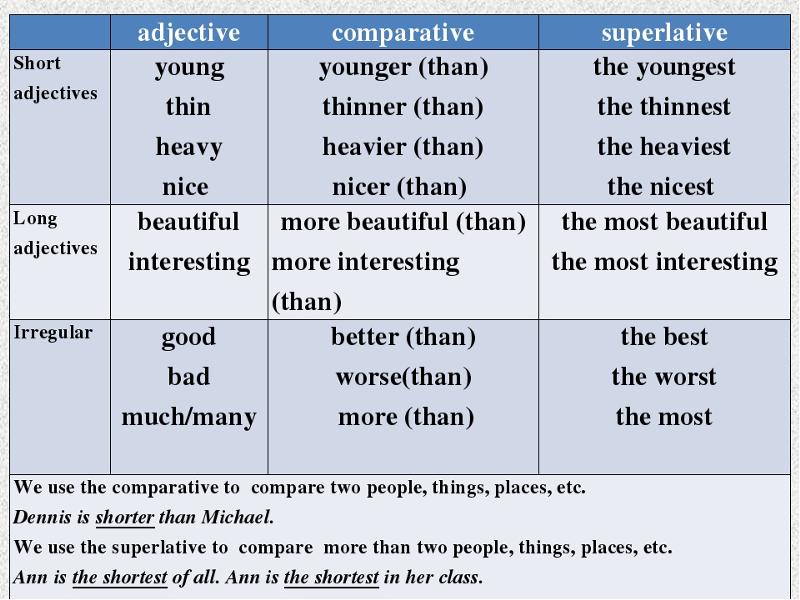 HRV, Shuttle, GRETTA HRV, Shuttle, GRETTA | 950 | 1900 |
| 41 | Hyndai Pony, Getz, Solaris, Accent, Verna, I20, | nine0053 6001200 | |
| 42 | Lantra, I30 | 700 | 1400 |
| 43 | Hyundai Sonata. NF, I40, Elantra | 800 | 1600 |
| 44 | nine0049 Hyundai Galloper. Tucsan. Santa Fe950 | 1900 | |
| 45 | Hyndai Starex, H 1, Creta | 900 | 1800 |
| 46 | Isuzu Trooper, Gemini | 750 | 1500 nine0050 |
| 47 | Jaguar F-TYPE, I-PACE, XE, XK, XKR, XKR-S, X-TYPE | 1000 | 2000 |
| 48 | Jaguar XF, XJ, XFR-S, XFR, F-TYPE, E-PACE | 1100 | 2200 |
| 49 | Jaguar F-PACE nine0050 | 1100 | 2200 |
| 50 | Jeep Grand Cherokee, Caliber, Wrangler | 1000 | 2000 |
| 51 | Kia Rio, Avella, Picanto, Soul | 600 | 1200 |
| 52 | Kia Sephia, Shuma, Cerato, Ceed | 700 | 1400 |
| 53 | Kia Clarus, Credos*, Sephia II, Spectra, Optima | 800 | 1600 |
| 54 | Kia Magentis, Sportage, Carnival,Seltos nine0050 | 800 | 1600 |
| 55 | Kia Sorento | 900 | 1800 |
| 56 | Land Rover | 1000 | 2000 |
| 57 | Lexus 1S 200, 1S 300 | 900 | 1800 |
| 58 | Lexus GS 300, GS 400, LS 400 | 950 | 1900 |
| 59 | Lexus RX 300, 350, 450 | 1050 | 2100 | nine0041
| 60 | Lexus LX 470, 570 | 1100 | 2200 |
| 61 | Mazda Demio, Capella, Premacy | 600 | 1200 |
| 62 | Mazda 6, mx-3, mx-5, MPV, 3, 323,626 | nine0053 7001400 | |
| 63 | Mazda CX-5,CX-7 | 900 | 1800 |
| 64 | Mazda CX-9 | 1000 | 2000 |
| 65 | MB A series nine0050 | 800 | 1600 |
| 66 | MB C series | 900 | 1800 |
| 67 | MB E series, Sprinter | 1000 | 2000 |
| 68 | nine0049 MB S, ML, V series1100 | 2200 | |
| 69 | MB G, GL series | 1200 | 2400 |
| 70 | Mitsubishi Colt, Space Star | 600 | 1200 | nine0041
| 71 | Mitsubishi Galant, Carisma, Legnum, Eclips, Lancer | 700 | 1400 |
| 72 | Mitsubishi Chariot, Grandis, Outlander | 800 | 1600 |
| 73 | Mitsubishi L 200, Delica, Space Gear nine0050 | 900 | 1800 |
| 74 | Mitsubishi Pajero, Montero, RVR, Space Runner/Wagon | 1000 | 2000 |
| 75 | Nissan Micra, Almera, Primera, Sunny, Pulsar, Cube, Tiida, Note | 600 | 1200 nine0050 |
| 76 | Nissan Maxima, Cefiro, Teana, X-Trail, Juke | 900 | 1800 |
| 77 | Nissan Pathfinder | 1000 | 2000 |
| 78 | Nissan, Serena, Qashqai, Terrano nine0050 | 900 | 1800 |
| 79 | Opel Corsa, Astra, Combo, Kadet | 600 | 1200 |
| 80 | Opel Omega, Tigra, Zafira, Vectra, Kaddy, meriva | 700 | 1400 | nine0041
| 81 | Opel Frontera, Monterey | 900 | 1800 |
| 82 | Pontiac | 900 | 1800 |
| 83 | Peugeot 106.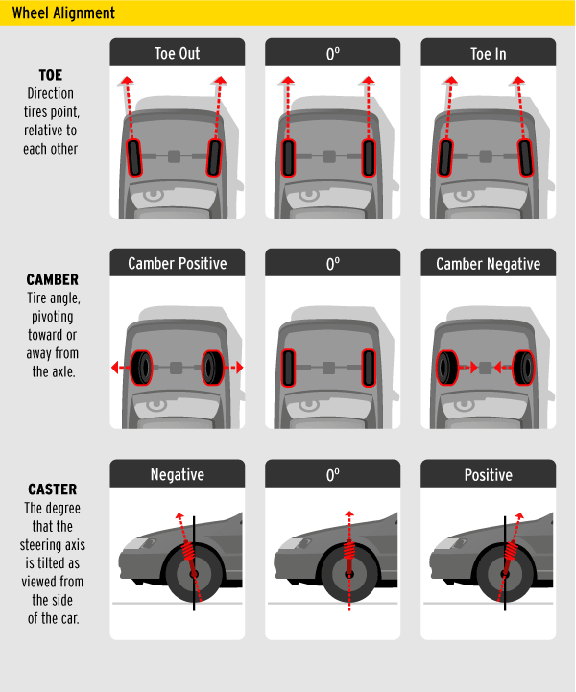 206,306,307, 308, Partner 206,306,307, 308, Partner | 600 nine0050 | 1200 |
| 84 | Peugeot 405, 406, 605, 407 | 700 | 1400 |
| 85 | Peugeot 607, 806, Boxter | 1000 | 2000 |
| 86 | Renault Clio, Simbol*, Logan, Tingoo, Kangoo, Sandero nine0050 | 600 | 1200 |
| 87 | Renault Laguna, Safran, Scenic, Megane, Fluence | 700 | 1400 |
| 88 | Renault Duster | 800 | 1600 |
| 89 | range rover | 1050 | 2100 |
| 90 | Saab 900. 9000, 9-3, 9-5 | 700 | 1400 |
| 91 | Seat Arosa, Ibiza, Toledo, Leon, Cordoba | 600 nine0050 | 1200 |
| 92 | Seat Alhambra | 700 | 1400 |
| 93 | Skoda Fabia | 600 | 1200 |
| 94 | Skoda Octavia I/II/III, Romster, Yeti nine0050 | 700 | 1400 |
| 95 | Skoda Octavia 4x4, SuperВ | 800 | 1600 |
| 96 | Skoda Karoq | 900 | 1800 |
| 97 | nine0049 Skoda Kodiak1000 | 2000 | |
| 98 | Subaru Impreza, Forester, Legacy | 800 | 1600 |
| 99 | Subaru Outback | 800 | 1600 | nine0041
| one hundred | Suzuki Vitara, Grand Vitara | 800 | 1600 |
| 101 | SsangYong Kyron | 800 | 1600 |
| 102 | SsangYong Rexton | nine00 | 1800 |
| 103 | Toyota Corolla, Carina, Sprinter, Vitz, Corsa*, Yaris, Auris, Prius, Picnic | 600 | 1200 |
| 104 | Toyota Vista, Avensis | 800 | 1600 |
| 105 | Toyota Previa, Camry, RAV 4, Crown, Celica, Mark II, h2 | 850 | 1700 |
| 106 | Toyota Land Cruiser Prado, Harrier | 1100 | 2200 |
| 107 | VW Polo | nine0053 6001200 | |
| 108 | VW Golf V, VI, VII, VIII | 700 | 1400 |
| 109 | VW Tiguan, Amarok | 1000 | 2000 |
| 110 | nine0049 VW Vento, Bora, Jetta700 | 1400 | |
| 111 | VW Touareg | 1100 | 2200 |
| 112 | VW Passat B4, B5 | 700 | 1400 |
| 113 | VW Passat B6, B7, B8, SS | 800 | 1600 |
| 114 | VW Transporter, Sharan, Multivan, Caravel | 900 | 1800 |
| 115 | VW Taos | 1000 nine0050 | 2000 |
| 116 | VW Teramont | 1150 | 2300 |
| 117 | Volvo S40/V40, C30 | 700 | 1400 |
| 118 | Volvo S60, 850 nine0050 | 800 | 1600 |
| 119 | Volvo S80, XC60 | 900 | 1800 |
| 120 | Volvo Cross Country, XC90 | 1000 | 2000 |
* - vehicles equipped with all-wheel drive Chinese cars: actual price from 1200 depending on the car class (according to analogues)!!
Monday, July 18, 2016 12:27:01 Europe/Moscow
transverse axles of the vehicle. This was done for different purposes, for example, the wheels were placed with the right side out, so that when driving, the dirt would not fall on the passengers, or vice versa, so that the wheel would not come off the axle when the dowel was lost (the pin holding the wheel). Carriages have long gone, but the installation of wheels with different inclinations has reached and is used in modern cars. These settings are called wheel alignment. Next, we will look at the main ones. nine0003
This was done for different purposes, for example, the wheels were placed with the right side out, so that when driving, the dirt would not fall on the passengers, or vice versa, so that the wheel would not come off the axle when the dowel was lost (the pin holding the wheel). Carriages have long gone, but the installation of wheels with different inclinations has reached and is used in modern cars. These settings are called wheel alignment. Next, we will look at the main ones. nine0003
In service centers, we often see a suggestion to adjust the wheel alignment. In the phrase "dismantling-collapse" two parameters of wheel installation are hidden at once. The first one is convergence/divergence . Toe-in is the angle between the plane of rotation of the wheel and the longitudinal axis of the vehicle as viewed from above. If the planes of the wheels intersect in front of the car (as in the picture on the right), then this is called a convergence, if behind the car, then a divergence. nine0003
nine0003
The vast majority of production vehicles have front wheel toe-in. Firstly, it allows you to compensate for the effect of longitudinal forces on the wheel during rolling. Secondly, it improves handling and stability on the road. There are also reverse examples: with a small discrepancy between the wheels, the speed of reaction to turning the steering wheel increases. Such settings are often used in motorsport. But in everyday life, other benefits of toe-in are much more important than excessively “sharp” steering when diverging. nine0003
Another important wheel setting is camber . Camber is the angle between the vertical and the plane of rotation of the wheel, when viewed from the front of the car. Camber can be positive (if the top of the wheel is facing out) or negative (if the wheel is facing towards the body). With the development of various types of suspensions on cars, both positive and negative camber angles are encountered. The positive angle is designed to compensate for the displacement of the wheels when the axle is loaded (static load, or dynamic during acceleration and braking). Negative camber improves traction and stability. Negative camber machines can be seen in car racing, but these settings are detrimental to tire life. nine0003
Negative camber improves traction and stability. Negative camber machines can be seen in car racing, but these settings are detrimental to tire life. nine0003
As a rule, wheel alignment values are indicated by the ranges within which they can be set. Even small changes in these angles affect the handling and stability of the car, because the wheel must maintain an optimal position in all driving modes, at all speeds and on various surfaces. And by adjusting the kinematics of the suspension and setting these angles, one or another automaker can give a different character to their models.
Wheel alignment also affects tire wear. With incorrect settings, the tire may wear out unevenly, which will cause it to fail earlier. In some cases, by wear, you can determine which settings have gone astray in the suspension.
With incorrect camber there will be increased wear on one side of the tire.